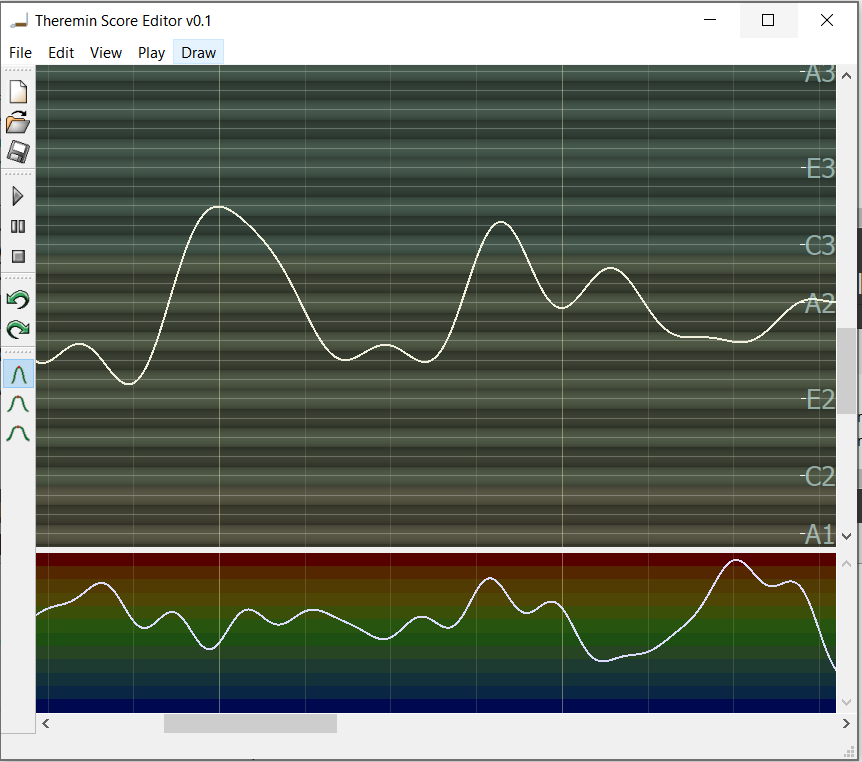Idea: make desktop app for editing/capturing/playback of theremin score (pitch + volume track).
I've tried to create separate topic, but it looks like it did not pass moderation.
Prototype screenshot (Qt cross platform open source app):

Planned functionality:
* Allow "drawing" of pitch and volume. Should support limitation of velocity/acceleration and higher derivatives of value transitions (simulate hand movement limitations). Pitch correction (snap to center of halfnote), custom transitions between notes, vibrato...
* "Pitch preview" for drawing tools - to hear pitch for moving pointer over pitch track, or pitch+volume when moving over volume track.
* Playback / synthesis of whole track or selected loop, including live reaction on editing.
* Different synthesizers / presets - allow to experiment with synthesis. If algorithms from real digital theremin (like D-lev) implemented, could be used as preset editor.
* Render / audio file export - to save synthesized audio into file.
* Capture track from recorded audio
* Capture track from digital theremin device (e.g. via USB Serial connection)
* Playback track on digital theremin (e.g. send pitch + volume flow via USB Serial to theremin device)
Current state: prototype.
Track is represented by 1200 pitch+volume floating point "sampes" per second.
Zoom / scrolling of pitch and volume panes is working.
127 midi notes range for pitch, 20..-100dB range for gain.
Meter marks are fixed
Drawing tool can be selected (currently, 3 "pens" with different max velocity / acceleration settings).
Currently working on smooth drawing implementation. It's actually not an easy task...
GitHub link

